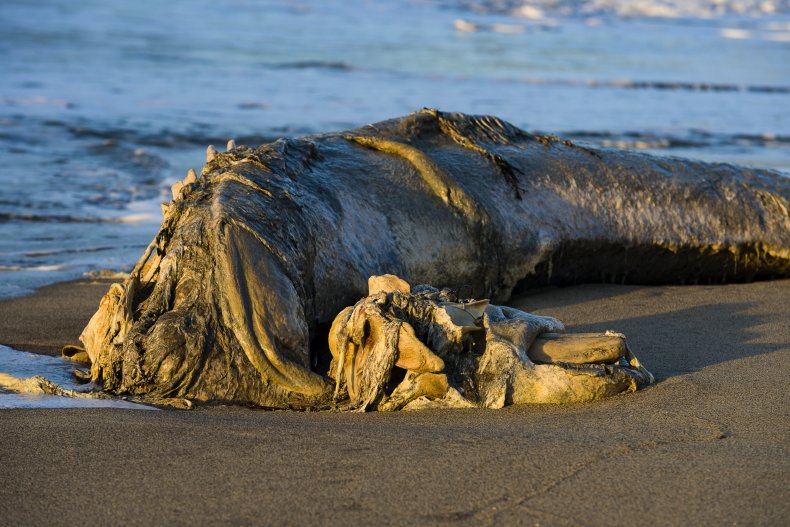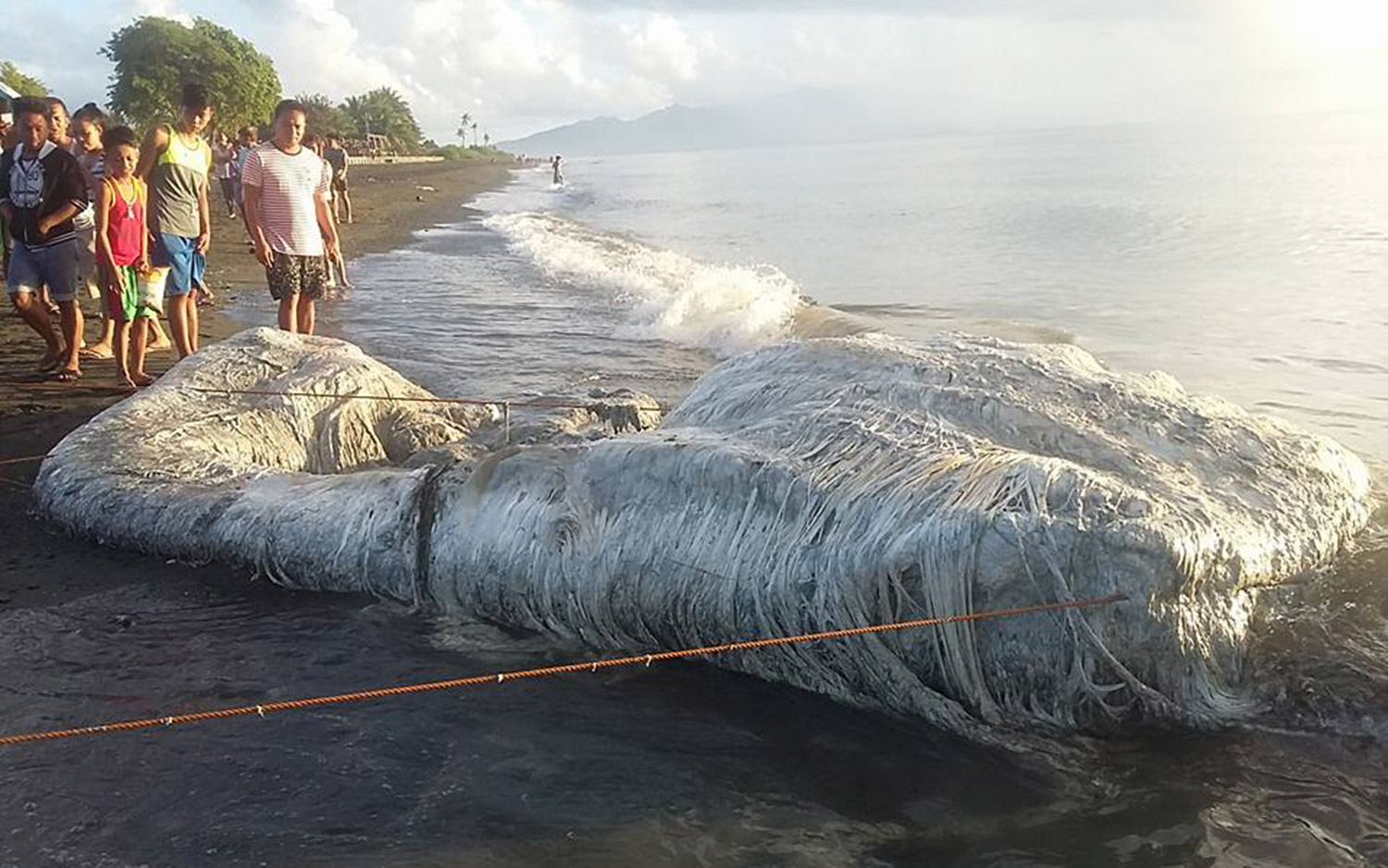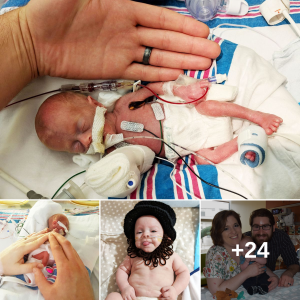A huge, hairy blob that washed up on a beach in Oregon has been identified by scientists.
It was discovered on October 12 near Florence, Oregon, by local resident Adoni Tegner, who told local KOIN 6 News that it smelled of “decomposing mammal,” and was covered in what looked like stringy white hairs.
“It just didn’t look anything like what I’ve ever seen,” he said. “It looked more stringy and it almost looked like it had been a large squid or something.”

Stock image of a dead Pilot Whale in Cornwall, U.K. The blob that washed up in Florence, Oregon, is thought to be a decaying whale carcass.
Dead animals often wash up in states of decay that render them unrecognizable. When large animals die at sea, the gasses produced by the decomposition of their bodies make the carcass float, which then washes ashore.
The strange blob was covered in stringy filaments, which led Tegner to wonder if it was a whale or some other creature.
“If it had been torn apart, it was really odd how the muscle structure broke down and almost made it look like it had some kind of tentacles on it,” he said.
Scientists agree that this misshapen beast was likely the decomposed body of a dead whale.

“Based on the photos, I’d guess the blob is a decomposing baleen whale carcass,” Mark Clementz, a paleobiology professor at the University of Wyoming, told Newsweek. “The hair-like structures could be baleen poking through or they could be the remnants of the muscle fibers that run along the throat and stomach.”
Whales can often die of old age or disease but can also end up on beaches as a result of stranding, where it ends up on the sand and can’t get back to the water. This sometimes happens en masse, with tens of whales or dolphins dying on the same beach.

The strange filamentous hairs covering the blob were also suggested to be a result of tendons and collagen fibers decaying at different rates, creating a furry texture across the carcass.
“It’s heavily decomposed which is why it looks like that, and different tissues will decompose at different rates. So tendons, collagen fibers, various proteins, will decompose at different rates, one of which I assume is the ‘white hair’ they are discussing (which clearly isn’t hair),” Yannis P. Papastamatiou, an associate professor in predatory ecology at Florida International University, told Newsweek.
Culum Brown, a professor and fish biologist at Macquarie University in Australia, suggested that the hair might be decomposing fat instead.
“The white ‘hair’ is mostly made of bacteria breaking down strings of blubber,” he told Newsweek. “It must smell REALLY bad.”

Dead whales washed up on beaches rapidly begin to smell as the bacteria decay the carcass, producing gasses like cadaverine and putrescine.
“It would make it so you never want to eat fish again. It is horrible,” one Richmond, Virginia, resident previously told ABC7 News in June in reference to a dead whale washing up on a local beach. “It is just the worst stench you could ever believe. It was just a putrid smell.”
When whale carcasses wash ashore, local authorities often don’t want to leave it to rot on the sand, as the smell can be off-putting to beachgoers and can attract scavengers to the beach. Often, they attempt to drag the carcass back out to sea, but this can result in it just washing up on the beach again. In 1970, also in Florence, Oregon, authorities even attempted to break up a whale carcass using dynamite, which backfired and resulted in blubber raining down from the skies at high speeds. Smaller explosions are still occasionally used today, while older carcasses are often buried under the sand.




